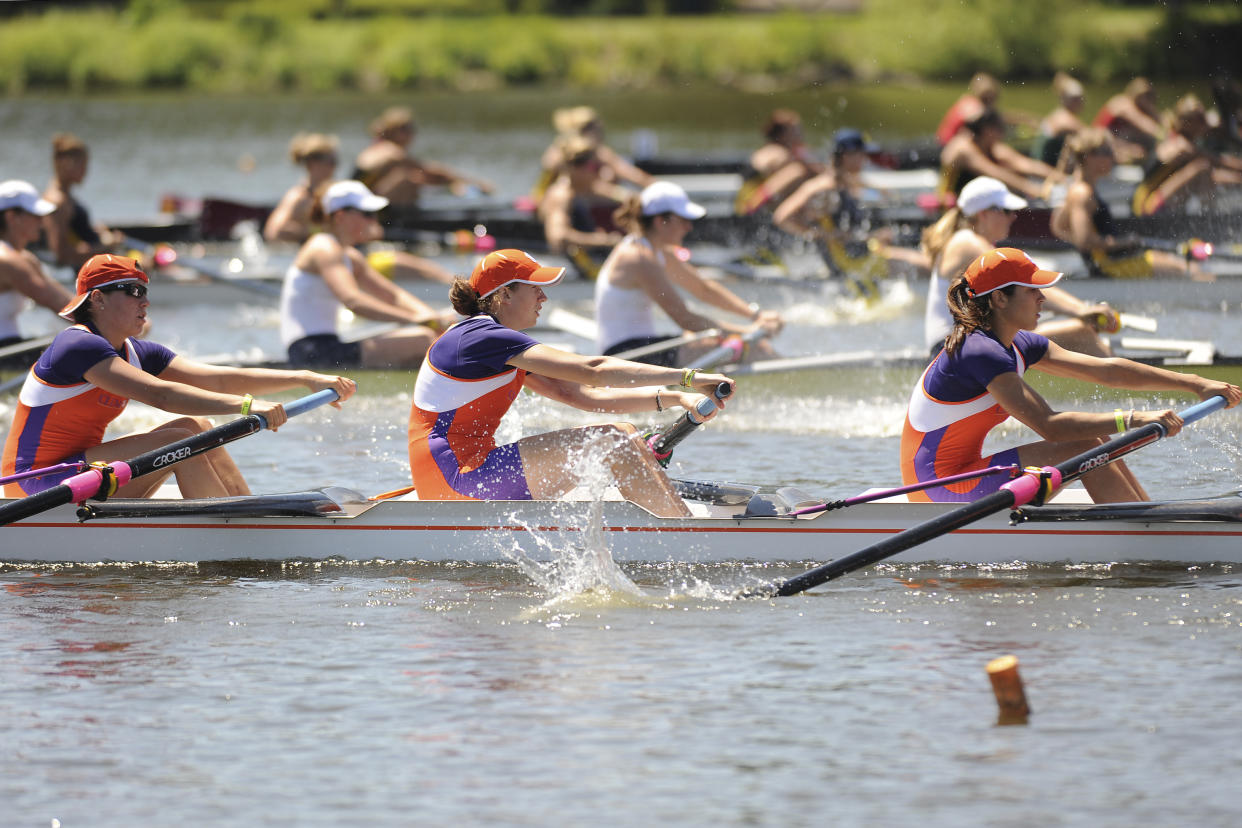Report sheds further light on football schools boosting women's rowing rosters to comply with Title IX

Since the dawn of Title IX in 1972 there has been debate about how to balance men’s and women’s rosters so that schools meet the first prong of the law. Most colleges abide by the statute through equitable athletic opportunities to male and female athletes, which can be difficult with football rosters eclipsing the 100-man mark.
Clemson and Alabama are among a growing number of successful football schools building huge women’s rowing rosters to meet Title IX eligibility requirements, according to a report by Henry J. Cordes at the Omaha World-Herald.
Others include Michigan, Ohio State, Texas, Oklahoma, Iowa and Wisconsin.
Football rosters offset by boosted rowing rosters
Basketball, softball and even soccer rosters aren’t going to come close to rivaling football numbers so schools push higher rowing numbers to comply, per the report. There is also history of schools dropping “non-revenue” men’s sports to meet the requirement, rather than add women’s sports to even out the equation.
In this case, Cordes found the schools skimmed around rules to report participation numbers to the U.S. Department of Education’s Office of Civil Rights that were far higher than the number participating.
In 2018, according to the report, Alabama reported 120 rowers on its roster and Clemson reported 104. Wisconsin had 176, Michigan had 132, Ohio State had 110 and Texas had 101. The NCAA average is 62.8 and Cordes found rosters were 40 percent larger than men’s rowing.
A school typically runs two eight-person boats, a four-person boat and a novice eight-person boat in regattas. That’s 28 participants, accounting for approximately half of the NCAA average and a fourth of the largest rosters.
They’re able to report higher numbers, according to Cordes, by recruiting newbies from the student body and putting them on the roster by the first competition. In rowing, there’s a light fall season before the spring and most new entrants drop off rosters once they realize the effort involved.
Washington busted in 2017 for inflated numbers
The University of Washington won the 2019 Division I rowing championship by sweeping the title events with wins in the Varsity Eight, Second Varsity Eight and the Varsity Four. It was the second time in three years the Huskies did so.
There are 64 rowers on their official roster, but that’s not the one reported to the U.S. Department of Education’s Office of Civil Rights.
Washington was busted two years ago by a Seattle Times investigation that found officials were inflating roster numbers and including dozens of women who weren’t actually on the team. In 2011, per the Times, the Huskies reported a roster of 181 to the U.S. Department of Education and listed 69 on the website.
The ensuing four years: 125 reported-74 roster, 142-86, 121-69, 143-65.
Washington changed its policy later that year and now counts those who compete, take instruction or practice in a boat for a four week period rather than anyone who signs up.
Rowing gave cover for college admissions scandal
The large rosters in rowing gave William “Rick” Singer’s Key World Foundation a place to stash the students involved in the college admissions scandal that went public in March. Many coaches were involved, but rowing was perfect since it already had large rosters, elicited little attention or scrutiny; and made known it accepted athletes whose experience wasn’t extensive.
Actress Lori Loughlin’s daughter was recruited to the USC rowing team to get into the school, according to court documents. The Los Angeles Times detailed other women who were recruited to USC via rowing despite never competing.
Women’s rowing at the collegiate level has grown since 1982, when the NCAA reported 28 teams and 862 participants. The average squad size was 30.8.
It has grown steadily since with the exception of three years in the mid-1980s, including a then-anomaly average roster of 72 rowers.
In 2018 there were 88 programs, 5,526 participants and an average roster of 62.8.
More from Yahoo Sports:


